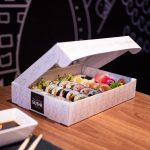In an era where sustainability has become more than just a buzzword, the humble fruit and vegetable paper box is emerging as an unexpected hero in the global movement toward eco-friendly packaging. These unassuming containers, once merely functional vessels for transporting produce, have evolved into sophisticated solutions that address multiple environmental concerns while maintaining practicality and aesthetic appeal. The transformation of these paper boxes represents a significant shift in how we think about packaging, consumption, and our relationship with the planet.
The environmental impact of traditional plastic packaging has become impossible to ignore. Every year, millions of tons of plastic waste end up in landfills and oceans, taking centuries to decompose while releasing harmful microplastics into ecosystems. In contrast, fruit and vegetable paper boxes offer a biodegradable alternative that significantly reduces this environmental burden. Made primarily from renewable resources like wood pulp from sustainably managed forests or even recycled paper materials, these containers break down naturally within months rather than centuries, completing a virtuous cycle that aligns with nature’s rhythms.
Beyond their environmental credentials, modern fruit and vegetable paper boxes demonstrate remarkable innovation in design and functionality. Contemporary manufacturers have developed specialized coatings that provide moisture resistance without compromising biodegradability. Advanced structural engineering allows these boxes to withstand the rigors of transportation while being lightweight enough to minimize shipping emissions. Some versions even incorporate natural antimicrobial properties derived from plant extracts, helping to extend the freshness of produce and reduce food waste—another critical environmental concern.
The economic advantages of switching to paper-based packaging are becoming increasingly apparent throughout the supply chain. For retailers, these boxes project an image of environmental responsibility that resonates with today’s conscious consumers. Studies consistently show that shoppers are more likely to choose products with sustainable packaging, even willing to pay a premium for environmentally friendly options. For producers, the lightweight nature of paper boxes translates to lower shipping costs, while their stackable design optimizes storage space. The growing infrastructure for paper recycling also creates economic opportunities in waste management and material recovery.
Consumer response to fruit and vegetable paper boxes has been overwhelmingly positive, reflecting a broader shift in purchasing behavior. Modern consumers are increasingly knowledgeable about environmental issues and actively seek out brands that demonstrate genuine commitment to sustainability. The tactile, natural feel of paper packaging creates a sensory connection that plastic cannot replicate, enhancing the perceived quality of the contents. Furthermore, the printable surface of paper boxes allows for attractive branding and essential information, creating marketing opportunities while maintaining environmental integrity.
Looking toward the future, the potential for innovation in fruit and vegetable paper packaging seems limitless. Researchers are experimenting with incorporating agricultural waste—such as banana leaves, sugarcane bagasse, and corn husks—into paper production, creating additional revenue streams for farmers while reducing waste. Smart packaging technologies that integrate paper-based sensors to monitor freshness are in development, potentially revolutionizing how we track food quality. As 3D printing technology advances, the possibility of customized, on-demand paper packaging solutions could further reduce waste by ensuring perfect sizing for each application.
The widespread adoption of fruit and vegetable paper boxes does face challenges, including cost competitiveness with conventional plastics and the need for continued improvement in durability and protective qualities. However, as production scales up and technology advances, these obstacles are steadily being overcome. Government regulations and corporate sustainability commitments are accelerating this transition, creating a favorable environment for eco-friendly packaging solutions to flourish.
Every fruit and vegetable paper box represents a small but meaningful choice in favor of environmental stewardship. As consumers, retailers, and producers increasingly recognize the multiple benefits of this packaging solution, its presence in supermarkets, farmers markets, and home kitchens continues to grow. This quiet revolution in how we package our produce demonstrates that practical solutions to environmental challenges can be both simple and sophisticated. The fruit and vegetable paper box stands as testament to human ingenuity’s ability to create solutions that serve both our practical needs and our planetary responsibilities.




Leave a Message